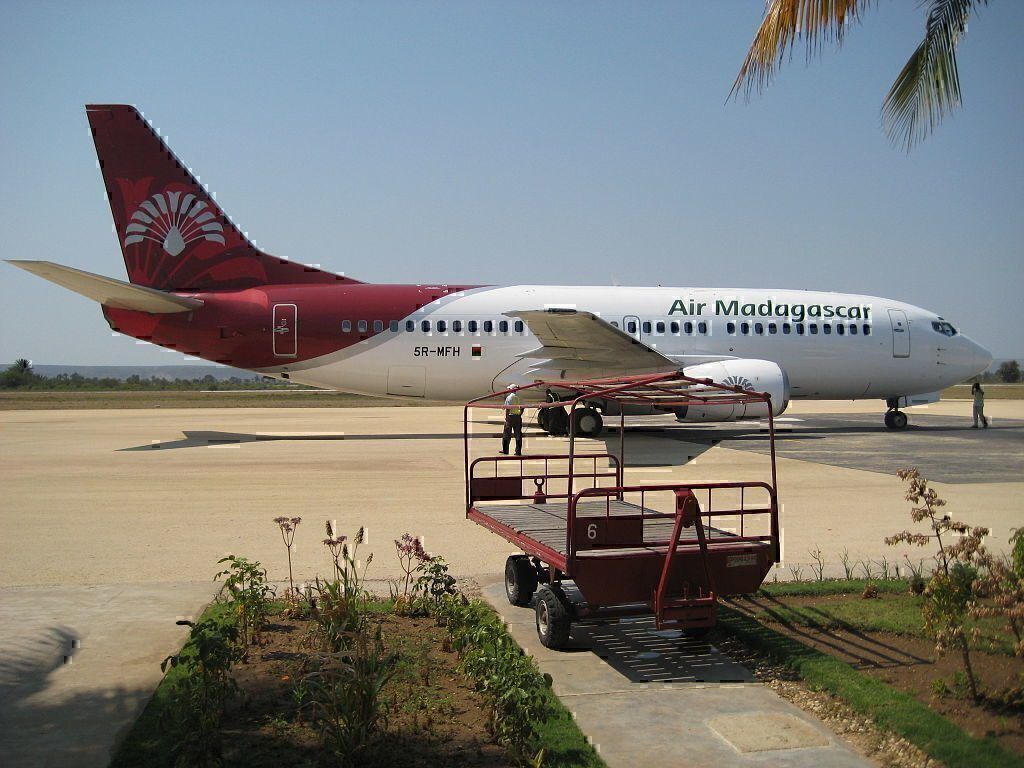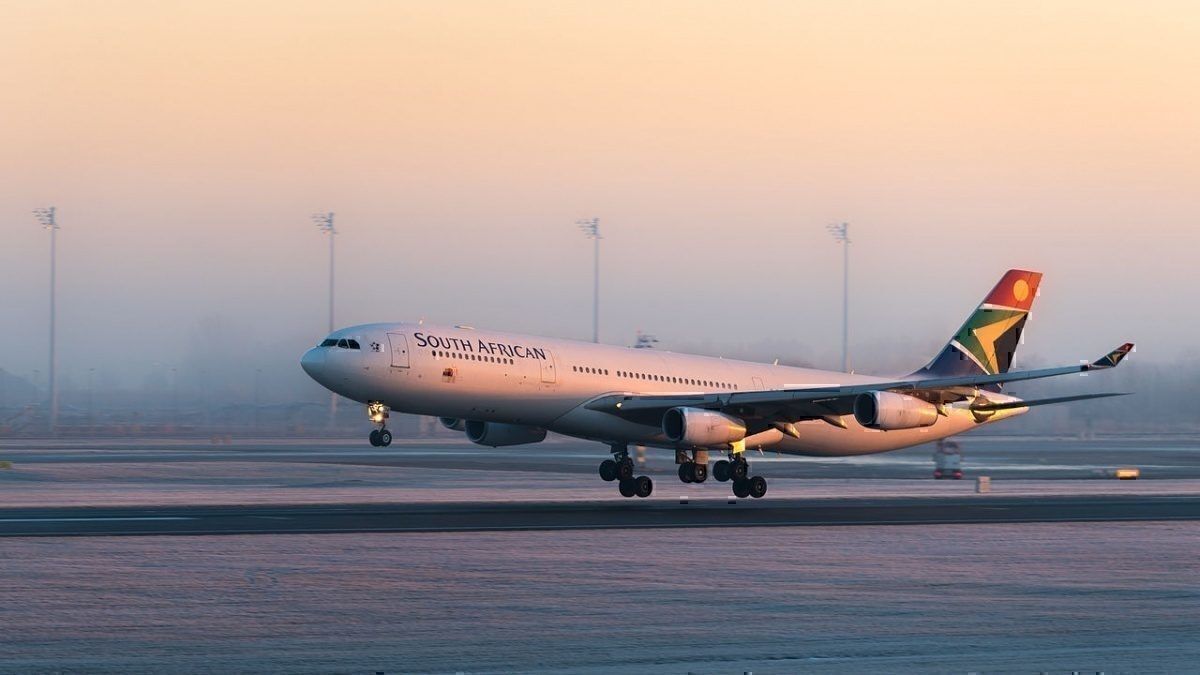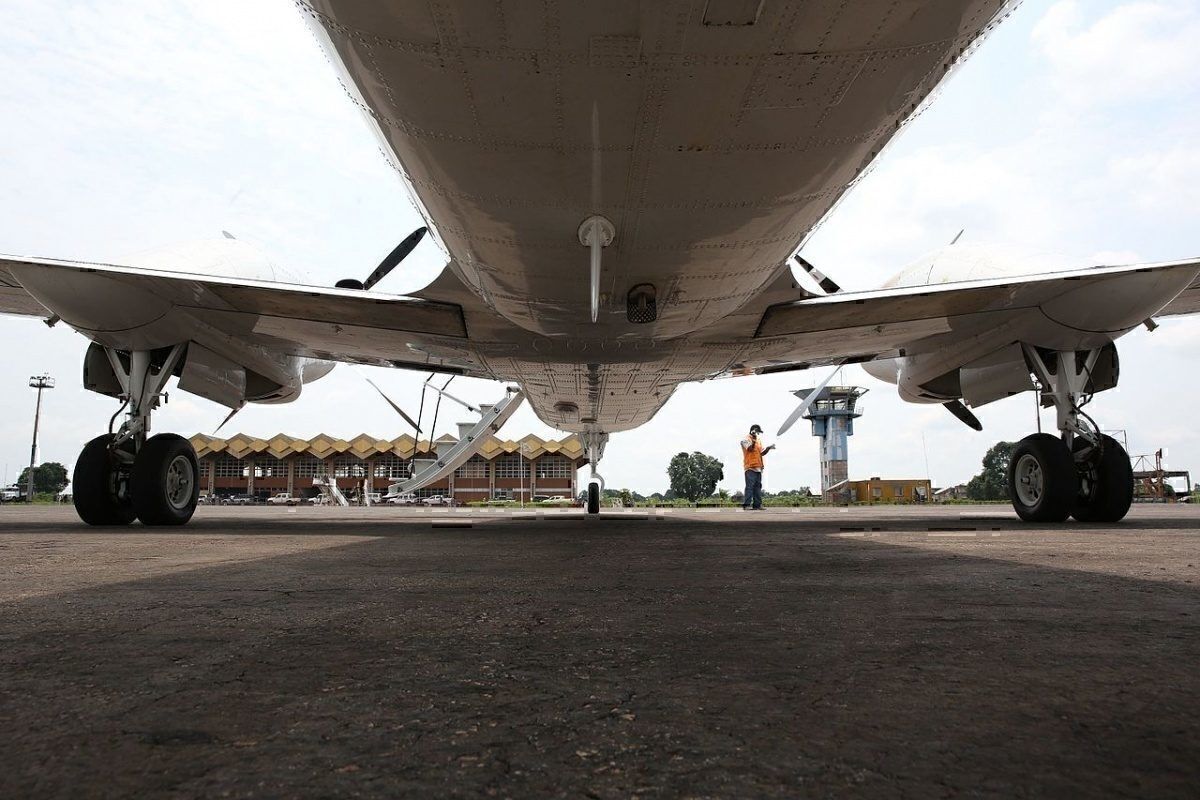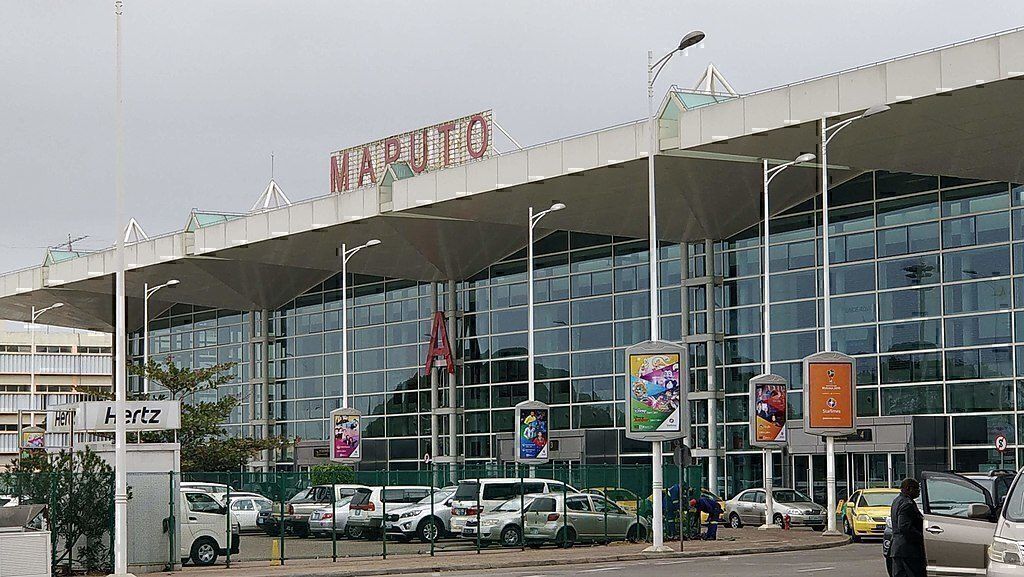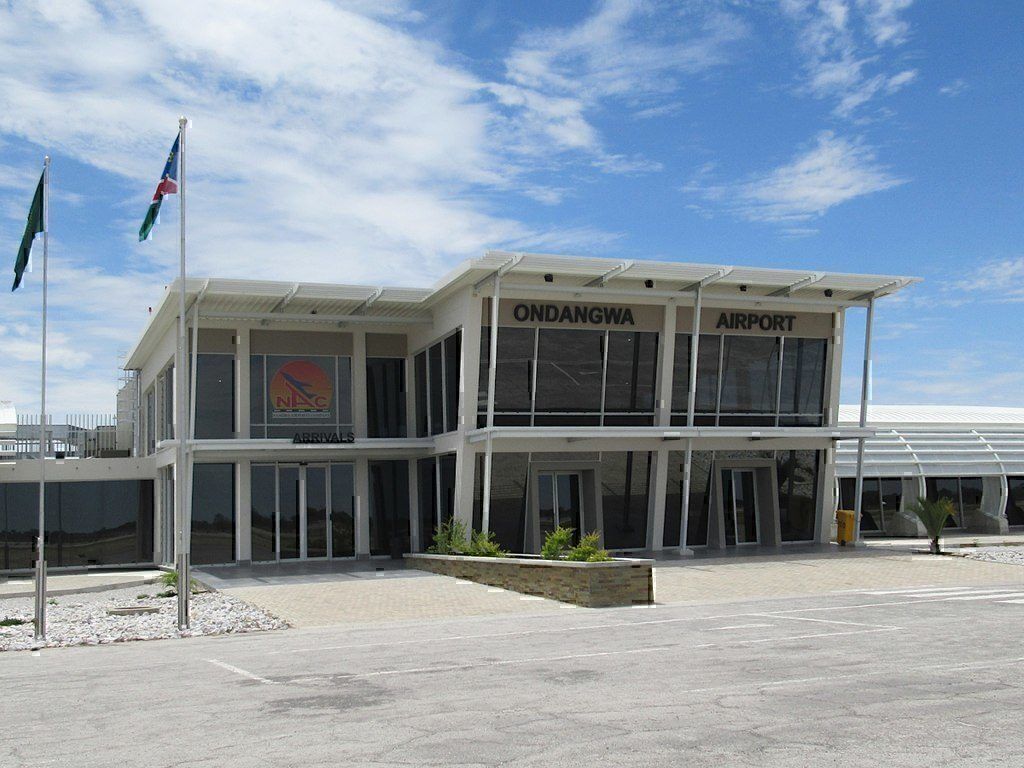As part of the wider trend of increasing Sino-African aviation ties, Chinese entities have invested heavily in African airport infrastructure. In part two of our three part series, we focus on the importance of infrastructure for development, the African airport infrastructure deficit, and China's role in reforming the African aerodrome landscape.
Air Madagascar Boeing 737-300, Tulear Airport behind a luggage trolley. Photo: Anthony Stanley / Wikimedia Commons
Infrastructure - the road to development
According to Nemat Shafik, former Vice-President of Infrastructure and Private Sector Development at the World Bank Group, infrastructure forms a foundation on which economies are built. Indeed, it's not hard to see why.
On one hand, the mere investment in infrastructures such as roads, telecommunications and, of course, airports can provide a short-term boost to employment in numerous economic sectors.
Likewise, sound infrastructure provision can decrease transport costs for both imports and exports. In turn, domestic consumers benefit from lower prices while exports become more competitive in global markets.
South African Airways regularly transports goods between Europe and South Africa . Photo: Julian Herzog / Wikimedia Commons
As national competitiveness and productivity increase, in-part due to efficient infrastructure, personal incomes grow, leading to increased transportation spending. In turn, the demand for higher capacity infrastructure grows and the aggregate effects of the initial investments become apparent.
Although the data is hotly debated, the IMF estimates the infrastructure multiplier effect at 0.8x, a gain which could benefit many emerging economies. Clearly, infrastructure is a fundamental pillar for any economy.
Africa's airport deficit
Like much of the infrastructure across the continent, airports tend to be deficient in terms of costs, quality and capacity. According to a 2010 World Bank report, most African airports are at least in part state owned and work with varying levels of independence.
Though state ownership may lead to non-profit-maximizing business models, African airports tend to levy fees that are higher than industry averages. Presumably, this is due to a lack of non-flight revenues meaning airports must rely on landing fees and facilitation charges to attain modest financial stability.
Gbadolite airport, DR Congo may not see many passengers but, could still use a refresh. Photo: MONUSCO / Wikimedia Commons
In terms of quality, air traffic control, radar, and aircraft surveillance are "wanting". While some airports technically have the physical capacity, they lack certified staff. Many smaller airports, on the other hand, lack critical infrastructure such as civilian radar and instrument landing systems.
While the 2010 report noted few terminal capacity constraints at the time, ICAO Council President Dr. Olumuyiwa Benard Aliu stated in 2018 that "many African hub airports are now expected to exceed their capacity by 2020".
China invests
Faced with the economic necessity of efficient infrastructure and deficient aerodromes, many African states have turned to China for assistance. The PRC, for its part, brought its finance capacity and construction experience to the table.
As reported by a 2009 World Bank publication, China committed $488m to airport projects between 2001 and 2007. More than a decade later, this number is said to be in the tens-of-billions. Indeed, our research found upwards 24 Chinese investment projects or commitments which have a projected value of $4.45bn.
Maputo Airport has benefited from Chinese Investments Photo: Jcornelius / Wikimedia Commons
The nature of these Chinese projects are, however, extremely varied.
In the smaller sub-$50m category, airports such as Ondangwa in Namibia or, Vilankulo in Mozambique, have benefited from Chinese construction or financial assistance.
On the opposite end, projects such the proposed Khartoum New International Airport, reported to be financed through a $700m loan by China's Exim Bank, or Rwanda's projected $1bn Bugesera Airport, top the scales.
In between these two extremities, dozens of projects such as those by Anhui Foreign Economic Construction Group in Mozambique or the China Road and Bridge Cooperation in Uganda or Congo-Brazzaville, serve as examples of Chinese investments.
Investments and loans not donations and charity
China is seeking both new markets and new natural resources to fuel it’s ‘peaceful rise’. Infrastructure investments are key to achieving this goal.
Firms such as the Anhui Foreign Economic Construction Group or China's Exim Bank presumably profit from construction contracts and finance agreements. Other entities benefit from increased trade ease and the transportation of commodities. For many African states, these act as concession payments for the loans used to fund government consumption, or projects such as airports.
After seeing Sri Lanka lease the Chinese financed Hambantota Port to the PRC for 99-years after being unable to pay its debts, many pundits have warned of Africa's debt-addiction, and cautioned of China's possible debt-trap diplomacy.
What do you think of Chinese investments in African airports? Will the continent benefit from these investments or will the case of Hambantota Port repeat itself?
Correction: A previous version of this article erroneously suggested that Kilimanjaro Airport was majoritarily built / financed by Chinese entities. It is understood that Kilimanjaro airport was renovated and financed by Dutch entities.

